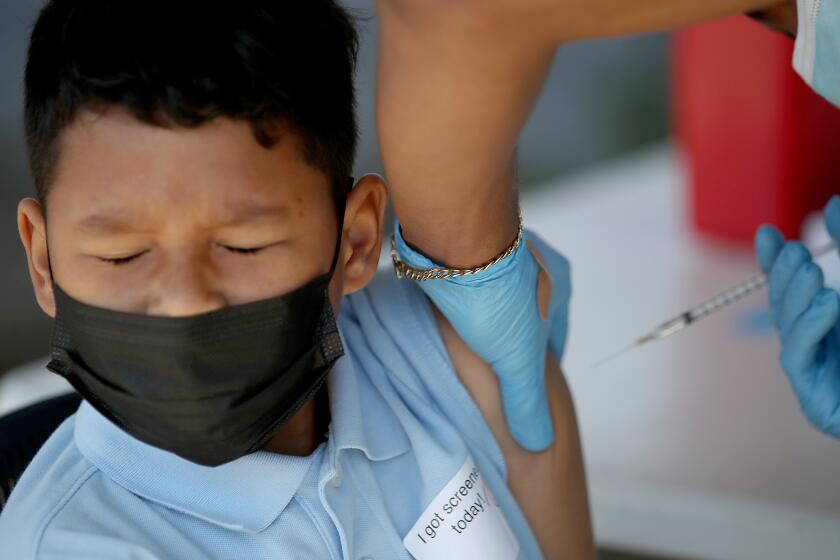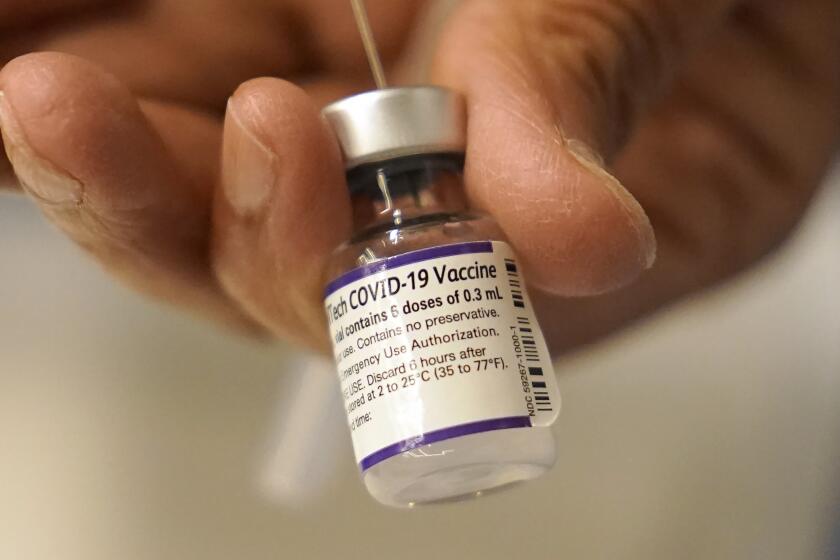WHO: COVID-19 cases rise for 2nd straight week, deaths fall

- Share via
GENEVA — The number of new coronavirus cases globally increased by 7% in the last week, driven largely by rising infections in the Western Pacific, even as reported deaths from COVID-19 fell, the World Health Organization said.
There were more than 12 million new weekly cases and just under 33,000 deaths, a 23% decline in mortality, according to the U.N. health agency’s report on the pandemic issued late Tuesday.
Confirmed infections had been falling steadily worldwide since January but rose again last week, due to the more infectious Omicron variant and its subvariant BA.2, in addition to the suspension of COVID-19 protocols in numerous countries in Europe, North America and elsewhere.
Health officials have said repeatedly that Omicron causes milder disease than previous versions of the coronavirus and that vaccination, including a booster, appears highly protective against severe disease.
The Western Pacific was the only region in the world where coronavirus cases were rising. Cases there jumped 21% last week, continuing weeks of increase.
According to figures from last week, the number of new infections remained stable in Europe and fell everywhere else.
The WHO cautioned that with many countries dropping widespread testing programs, many infections are likely being missed and new case numbers should be interpreted cautiously.
For now, weekly coronavirus cases remain flat nationally and in California, and are still declining in Los Angeles County. But the data could be a prelude to what’s to come.
At a press briefing on Wednesday, WHO emergencies director Dr. Michael Ryan said that even though some countries are seeing an exponential spread of the coronavirus prompted by the more infectious BA.2, it is proving less devastating than previous waves of the virus.
“Countries that have high rates of vaccinating their vulnerable populations are weathering the transmission storm,” he said. “We’re not seeing that translate into pressure on the health systems or higher rates of hospitalization and death.”
In recent weeks, numerous countries, including Britain, France, Italy and Germany, have relaxed many of their public health measures against COVID-19, even as numbers have continued inching upward. More than 85% of virus sequences shared with one of the world’s largest platforms are of the BA.2 subvariant of Omicron, the WHO said.
Last week, British Health Minister Sajid Javid said U.K. residents should brace for a jump in coronavirus infections but that the country was still “in a very good position” due to its high vaccination levels.
What accounts for BA.2’s recent success? It’s not due to an ability to evade the protection of COVID-19 vaccines, a new study finds.
Meanwhile, China’s health authorities this week reported the first coronavirus deaths in more than a year as the country battles its worst outbreak since the virus was detected in Wuhan in late 2019.
The semi-autonomous city of Hong Kong is also entrenched in a deadly wave of COVID-19, and the city of 7 million has recorded more deaths than mainland China during the pandemic.
Hong Kong Chief Executive Carrie Lam said this week that authorities would consider relaxing some of its strict pandemic measures as cases begin to fall after weeks of rising cases overloaded hospitals and cemeteries.








